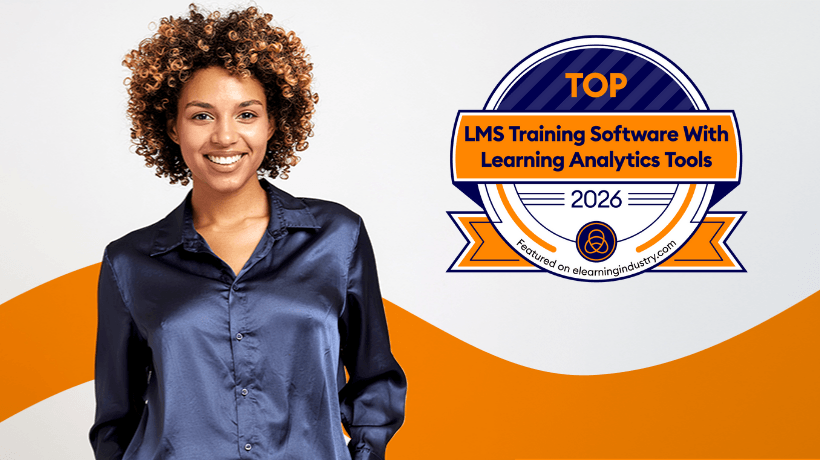Built-In Analytics Tools In The LMS Can Boost The Performance Of Your Employees
Millions of dollars are invested in employee training every single year. It makes a lot of sense if you consider how beneficial an effective employee training program can truly be. The best employee training programs have been proven to give organizations a competitive edge when it comes to attracting and retaining new talent.
They also have been known to improve employee engagement, employee competency, and increase profits. In fact, it has been found that comprehensive training programs have led to 218% higher revenue per employee.
Unfortunately, not all L&D programs are successful. It has been estimated that over $13 million per 1000 employees is wasted on ineffective training initiatives every year [1]. A significant amount of the money invested in employee development today is in online learning. 98% of companies plan to use some form of eLearning by the end of 2020 [2] [3].
This leaves many L&D professionals wondering how they can ensure that their online training programs are successful.
However, there are many different issues that can make online training ineffective. Learning analytics is the tool you can use to identify and correct them. This is one of the many reasons your next LMS should come with learning analytics.
By definition, learning analytics is the measurement, collection, analysis, and reporting of data about learners and their contexts. This data is used to gain a better understanding of the user and to optimize their learning experiences.
To help you better understand what kinds of learning analytics tools are needed to improve employee training and performance, we have shared the 3 learning analytics tools your next LMS should have.
The tools you should be looking for can be broken down into 3 categories. The first are metrics that your LMS can track, the second are the kinds of reports your LMS can provide. The third is predictive analytics capabilities.
1. Data Collection And Metrics
Data analytics is essential in determining the effectiveness of training and enhancing learning experiences. But how do you know which metrics your LMS should be able to track? Here are some of the most useful metrics for gauging the effectiveness of the learning process.
- Completion rates
- Students' progress
- When a user last logged in
- Course status
- Number of students enrolled
- Total time spent training
- Individual employee assessment/quiz scores and answers
- Learning path data (how far in the course a learner is)
- Number of answer attempts
2. Analytics Reports
Simply tracking key metrics is not enough to provide quick and accurate insights to improve training. Manually analyzing learner data is a lengthy, time-consuming process. This is why using an LMS that provides useful analytic reports in real time is important. Every LMS will have different reporting abilities and sometimes even different names for the reports, but there are 4 types of reports your next LMS should provide.
Enrollment Status
This report should provide information about the number of students that are enrolled and unenrolled. This report may also provide information about who is passing the course and minor learner activity data.
Learner Activity
This report gives a much more detailed account of learner interactions and patterns. Some information may include what materials they interacted with the most or if there were parts of the course that were skipped.
Learner Progress
This report will let you know where exactly learners are in their training journey. This will let you know if they are on track or behind.
Potential Problems
This report analyzes learner assessment data. If there are certain course materials that many employees are struggling with, this is the report that will let you know.
It ιis unlikely you will find an LMS that comes with built-in learning analytics, however, some are more compatible with predictive analytics and AI capabilities than others. This is something to keep in mind if you are looking for ways to personalize training for individual learners.
3. Predictive Analytics
Personalized learning is an instructional approach where the curriculum, content, format, and delivery method are optimized to meet each individual student’s needs. This is especially useful when you need to train large groups of diverse backgrounds. L&D teams often need to train employees who live in different locations, have different skill levels, and may even speak different languages.
Choosing an LMS that is compatible with predictive analytics and AI will ensure that you will have the option to implement personalized learning. Through the power of machine learning, AI systems can create individual learner profiles and customize the training programs for each learner, based on their ability, job role, preferred mode of learning, and experience.
Personalization of learning is also strengthened with the online interactive interface of evolved LMSs, which are a great platform to collate feedback from learners. Learners can share their experiences with different training programs, share their queries, or even request refreshers as and when required. Not only does this give L&D managers a lot of direction for future trainings, but it also helps them sustain the benefit of a training program for a longer time and for a larger group of learners, no matter how varied they may be.
Conclusion
Investing in Learning Management Systems is a decision that has long-term implications—not only on training but on the performance of your employees as well. Choosing an LMS that has learning analytics capabilities will help you measure the effectiveness of your training programs to ensure that you are getting the most out of your investments in eLearning.
To learn more about how learning analytics can improve your employee training programs, read the eBook The Power Of Learning Analytics: Measuring L&D Outcomes For Business Performance. If you're curious about how to use learning analytics for remote workforce engagement, join the webinar, too!
References:
[1] 10 Statistics on Corporate Training and What They Mean for Your Company’s Future
[2] 6 Things to Remember When Using eLearning to Train New Hires
[3] 98% of All Companies Plan to Use E-Learning by 2020 with Opportunities for Small Biz








